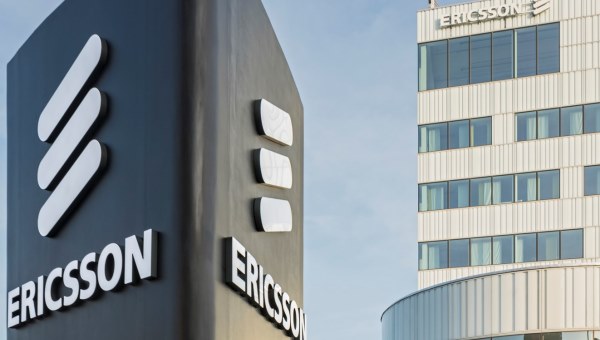Telecom
Ericsson Commits to Net Zero by 2040 in 2021 Sustainability and Corporate Responsibility Report

Ericsson delivered on its sustainability targets and made a series of new commitments in 2021. The company put a particular focus on energy performance and strengthening its ambition to reach Net Zero across its value chain by 2040.

In 2021 Ericsson introduced a new vision to improve lives, redefine business and pioneer a sustainable future. Building on decades as a sustainability pioneer, the company has made a strong commitment to fulfilling this vision through its own efforts and through working across and beyond the ICT ecosystem.
This focus is reflected in Ericsson’s latest Sustainability and Corporate Responsibility Report, which highlights its 2021 performance across the areas of responsible business, environmental sustainability and digital inclusion.
“Our sustainability-driven solutions and partnerships create real impact for our customers and our stakeholders,” says Heather Johnson, Ericsson’s Head of Sustainability and Corporate Responsibility.
“But they also create value for society, whether by enabling the reduction of emissions across industries, creating more energy-efficient networks or helping to bridge the digital divide. We made significant progress towards our sustainability goals in 2021, and we are now setting even more ambitious targets for the future.”
Performance and highlights
Net Zero: In 2021 Ericsson set a long-term ambition to be Net Zero by 2040 across its value chain. To meet this ambition, Ericsson will work towards 1.5°C aligned climate targets set by the Paris Agreement.
The first major milestone is to achieve Net Zero emissions from the company’s own activities by 2030 – as well as reducing emissions by 50 percent in its portfolio and supply chain also by 2030.
Energy performance: To meet customer expectations and help the telecom industry reach Net Zero, Ericsson has developed innovative solutions that enable operator networks to use as little energy as possible while managing expected growth in data traffic, meeting the needs of both current and future 5G networks.
In 2021, Ericsson achieved 36% energy savings from delivered Ericsson Radio System radios versus the legacy portfolio, surpassing the company’s approved Science Based Target of 35 percent one year ahead of schedule.
During 2021, Ericsson also launched a series of ultra-light Massive MIMO radios that are 10 percent more energy efficient than the previous generation.
Digital inclusion: The digital divide continues to be a key challenge to global economic development with roughly 2.9 billion people still offline. With innovative technologies and services, Ericsson and its partners and customers are pioneering new ways to connect societies and improve lives.
In 2021 Ericsson continued its partnership with UNICEF in support of the Giga initiative, helping to map schools and assessing their connectivity in 35 countries by the end of 2023.
Ericsson also made a commitment to positively impact one million children and youth by 2025 by providing access to digital learning and skill development programs as part of the World Economic Forum-aligned EDISON Alliance 1 Billion Lives Challenge.
Corporate responsibility: Ericsson continued its focus on health, safety and well-being in 2021, including a robust COVID-19 response that included a focus on employee mental health and access to vaccines in places where they were not easily accessible.
In 2021 there was an increase in work-related fatalities compared to 2020, in contrast to the decreasing trend of recent years. The company has declared this unacceptable and is more committed than ever to Target Zero – a goal of zero fatalities and lost workday incidents.
Ericsson launched its revised Code of Business Ethics, which defines both the company’s ethical principles and its expectations of responsibility across the value chain. The company also added integrity as one of its four core values as well as publishing a report on the human rights impact of 5G.
Ericsson’s Sustainability and Corporate Responsibility Report is part of the Company’s Annual Report and externally assured by an independent third party. It is also produced in accordance with GRI Sustainability Reporting Standards and the UN Guiding Principles on Business and Human Rights Reporting Framework.
Ericsson continues to strengthen its radio access network (RAN) portfolio with solutions that address the 5G rollout and sustainability goals of communications service providers. Announced today, the portfolio additions will deliver sizeable energy savings and up to ten-fold capacity increases – with minimal or no added footprint.
Leading the portfolio enhancements is Radio 4490, a dual-band radio that delivers 25 percent lower power consumption and lesser weight compared to the current product. This radio type is compatible with most of the radio sites globally as it supports the main FDD (Frequency Division Duplex) bands being used by many service providers for their 5G deployment.
Ericsson is also launching a high-power version of the new dual-band radio, 4490 HP, which enables up to 50 percent more output power compared to current radios. The two new radios apply passive cooling – reducing power consumption further, as fans are not needed. They are also Cloud RAN-ready.
Per Narvinger, Head of Product Area Networks, Ericsson, says: “We continue to evolve our RAN portfolio with more solutions for smart, slim, and sustainable 5G networks. Our latest innovations will further optimize 5G sites for both purpose-built and Cloud RAN deployments.”
5G rollouts are accelerating across the world, with frontrunners gearing up for the shift to 5G Standalone to drive new consumer and enterprise use cases. Introducing 5G means added spectrum and hardware – which is where Ericsson’s new products play a key role through the ability to raise capacity while slashing power usage – fueling efforts to break the energy curve.
Telecom
Bolt’s Playtivism Campaign Brings Chess Park to Lagos

Bolt, the leading ride-hailing platform in Africa, is reimagining what urban spaces can be with the launch of its “Playtivism” campaign in Lagos.

As part of this global initiative, Bolt is transforming a traditional parking lot into a “Chess Park”, a vibrant, people-first space where Lagosians of all ages can gather, play chess, and foster stronger community ties.
Playtivism is a call to playful, people-centered urban design. It is about giving cities back to the people by repurposing car-dominated spaces into areas that promote health, connection, and joy.
The campaign is inspired by over 81,000 submissions received during Bolt’s Rewind2023 campaign, where users shared ideas on how to make cities more liveable.
In Lagos, this vision takes shape through the Chess Park activation at Ikeja City Mall, taking place from April 9 to 13, a unique urban intervention that prioritizes people over cars.
The initiative is aimed at creating a new kind of meeting point, one where elders and youth can connect over chess, building bridges across generations and sparking meaningful community engagement.
The park will feature daily “teach-and-play” sessions hosted by two professional chess experts, as well as exciting activities including cash prizes for participants and other classic games like Ludo and more, open to anyone interested in learning or improving their skills.
As part of the activation, the renowned non-profit organization Chess In Slums will be participating on April 11, further reinforcing the park’s mission to empower and unite through play.
This initiative is part of a broader global effort, with a similar Urban Playground activation that was run in Lisbon, all under the Playtivism umbrella.
Bolt is turning the idea of mobility into more than just movement, it’s about rethinking how we use our shared spaces.
Speaking on the initiative, Osi Oguah, General Manager for Bolt Nigeria said: “At Bolt, we believe that cities become more fun, inclusive, and healthy when we design them for people, not just for cars and through Playtivism, we’re showing that small changes like turning a parking lot into a chess park can have a big impact on how communities interact and thrive.
“And next time you need to drive somewhere, think about riding instead. It’s better for your wallet, and better for your city. Riding is the new driving”, Osi said.
Telecom
MTN Extends Application Deadline for Media Innovation Programme to April 12

In a welcome turn of events for journalists, broadcasters, and content creators across the country, MTN Nigeria has announced the extension of the application deadline for its highly coveted Media Innovation Programme (MIP) to April 12, 2025. Originally slated to close on April 7, 2025, the new deadline provides additional time for a wave of aspiring applicants eager to join the next generation of media changemakers.

Now in its fourth year, the MTN Media Innovation Programme, run in partnership with the School of Media and Communication, Pan-Atlantic University (PAU) has become a career-defining fellowship for Nigerian media professionals. It offers a six-month, fully-funded certificate program packed with on-site training, international exposure, digital storytelling masterclasses, and access to a powerful alumni network.
According to MTN Nigeria and the School of Media and Communication, Pan-Atlantic University, the deadline extension is a response to the increasing volume of last-minute applications and growing demand for more inclusive access across the country.
“We’ve seen a remarkable surge in interest from content creators and journalists outside major urban hubs,” said Tobe Okigbo, Chief Corporate Services & Sustainability Officer, MTN Nigeria. After the webinar on April 4 hosted by past MIP fellows to support the applicants, it was important to extend the deadline to enable more diverse voices have a chance to be part of this experience”, he added.
In a rapidly shifting media landscape, where traditional models are being upended by digital disruption, programs like MIP are filling a critical gap, equipping media professionals with the tools to adapt, innovate, and lead.
With Nigeria’s entertainment and media industry projected to grow from $9 billion in 2023 to $13.6 billion by 2028, MTN’s initiative could not be more timely.
And for those still sitting on the fence. A recently hosted webinar featuring past fellows, including prominent voices like Mike Okwoche, a seasoned broadcast veteran and media mentor, and Amaka Okoye, a journalist and correspondent with experience in international media projects and digital transformation, offered inspiring testimonies about how MIP reshaped their professional outlook and positioned them at the forefront of media innovation.
The new application deadline, April 12, 2025, offers a lifeline for media professionals who might have missed the initial window. But make no mistake: the clock is ticking. And for those with big ideas and bold stories to tell, this is the time to apply.
Interested journalists, bloggers, and content creators can apply for the MIP 2025 at https://bit.ly/MTN_MIP2025.
Telecom
GSMA Reveals Sub-Saharan Africa as Mobile Money Epicentre

Mobile money has surpassed two billion registered accounts, with over half a billion active monthly users across the globe in the 25 years since its launch.

Leading this market growth is Sub-Saharan Africa with a total of 1.1 billion registered accounts and more than 280 million active 30-day accounts, as recorded at the end of 2024.
This is based on the State of the Industry Report on Mobile Money 2025, compiled by the GSM Association’s (GSMA’s) mobile money programme data and insights team.
Now in its 13th year, the report details the progress of mobile money, with the latest edition indicating transaction volumes and values for mobile money accounts experienced double-digit growth in 2024.
Over 108 billion transactions worth $1.68 trillion were processed through mobile money accounts, for the period under review. This is equivalent to $3.2 million worth of transactions per minute, says Vivek Badrinath, GSMA director-general.
Year-on-year, transaction volumes increased by 20%, while transaction values grew by 16%, up from a 13% increase in 2023.
According to the report, the industry took 18 years to achieve one billion registered accounts and 250 million active users from 2001, doubling in size in the following five years.
Mobile money accounts have “consistently” maintained growth rates above 10% since 2020. In 2024, registered accounts increased by 14% year-on-year to 2.1 billion, while active 30-day accounts grew by 11% to reach 514 million, the report reveals.
Badrinath highlights that Sub-Saharan Africa remains the epicentre of mobile money, accounting for most new registered and active accounts.
“Mobile money has emerged as a powerful driver of financial inclusion and economic growth. Its continued success depends on supportive regulatory environments that promote innovation and accessibility, and help unlock the full socio-economic potential.
“To ensure mobile money remains accessible, affordable and safe, it is vital for governments and regulators to work with financial service providers to support financial literacy programmes, empowering underserved populations and opening new opportunities for financial decision-making.
“Looking ahead, I believe we are well-positioned for the next wave of expansion, where mobile money emerges as the preferred payment service, driving business growth, strengthening economies and shaping a better future for all.”
The report also notes that mobile money continues to play a key role in economic development. By the end of 2023, the total gross domestic product (GDP) of countries with mobile money services was over $720 billion higher than it would have been without them, reflecting a 1.7% increase in GDP driven by mobile money.
“In Sub-Saharan Africa alone, year-on-year, mobile money added around $190 billion to GDP in 2023, demonstrating its sustained economic influence.”
Regional phenomenon
Mobile money is used to buy goods and services, save money and send money to friends and family – both at home and abroad.
Based on the report, the bulk of mobile money accounts in the Sub-Saharan Africa region was driven by adoption and use in East and West Africa.
East Africa was the leading driver of monthly active account growth in 2024, followed by Southeast Asia and West Africa.
Introduced as an offering for financial inclusion for the unbanked, mobile money offerings, such as East Africa’s M-Pesa, have become the region’s most popular mobile money platform.
According to the report, over two-thirds of registered accounts in 2024 came from Sub-Saharan Africa. In 2024, there were more than one billion registered accounts in Sub-Saharan Africa – twice as many as in 2020.
Compared to forecasts from 2019, the GSMA found that registered accounts grew faster than expected, with data from 2024 showing 75% more registered accounts in Sub-Saharan Africa than estimated.
“Growth in active 30-day accounts was driven by East Africa, which contributed 32% of new accounts in 2024, closely followed by Southeast Asia (28%). West Africa and South Asia contributed 21% and 19%, respectively. Double-digit growth in active monthly accounts in 2024 confirmed that millions continue to rely on mobile money for their daily financial needs.
“Between 2014 and 2024, the number of active 90-day accounts as a proportion of SIM cards in Sub-Saharan Africa rose from 10% to 39%. Across other regions, the highest ratio of active 90-day accounts to SIM cards was 8% in South Asia. While some countries in Sub-Saharan Africa can be considered relatively mature, there is still room for growth – both in Sub-Saharan Africa and in other regions.”
Southeast Asia recorded the second-fastest growth rate for active monthly accounts, behind the Middle East and North Africa.
“The region saw active 30-day accounts grow faster than registered accounts, supported by enabling regulatory environments in markets including Cambodia, Fiji, the Philippines and Vietnam.”
The GSMA also reveals that in East Asia and the Pacific many mobile money providers have evolved into full-service financial platforms, offering a broad range of products to match user needs. The most successful providers are often those who are actively innovating the breadth of their offerings, it says.
“Mobile money providers are increasingly offering adjacent financial services like credit, savings and insurance. As of June 2024, 44% of providers offered credit services, making it the most used adjacent financial product. Savings services were offered by around a third of providers, while insurance remains the least common with around 28% of providers offering it.”
Despite progress, the report highlights that several barriers to adoption remain, notably among women. It states that among 12 countries surveyed, eight continue to exhibit a gender gap in mobile money ownership, with little improvement since 2023.
“Limited awareness and low digital financial literacy are significant barriers, particularly for women. However, women who hold mobile money accounts are nearly as likely as men to have used them in the past 30 days.”
Badrinath states: “As we continue our work to close the usage gap, and drive digital and financial inclusion, it is hugely encouraging that almost 60% of mobile money providers have introduced digital skills initiatives. These efforts not only boost financial awareness and combat fraud, they also help to break down the barriers that prevent millions – especially women – from fully benefitting from mobile money services.”

 E-Financial2 days ago
E-Financial2 days agoAfDB Mobilizes $2.2Bn to Support Nigeria’s Agriculture

 News2 days ago
News2 days agoMTN Pens Moving Tribute to Pascal Gabriel Dozie, Former Chairman

 E-Business2 days ago
E-Business2 days agoNatasha: TMG Demands Probe of Alleged Data Breach in Failed Recall

 General News2 days ago
General News2 days agoNIPOST Threatens Courier, Logistics Service Providers

 E-Business2 days ago
E-Business2 days agoCJN Warns Judicial Officials against Data Breaches, Cyber Attacks

 Telecom2 days ago
Telecom2 days agoNCC Issues 90 Days Deadline to Telcos to Resolve Subscribers’ Unclaimed Airtime

 News2 days ago
News2 days agoNIGCOMSAT, Jigawa State Empower 150 Youths on Satellite New Innovations

 E-Financial2 days ago
E-Financial2 days agoCourt Delays $81.5Bn Tax Evasion Case against Binance



























